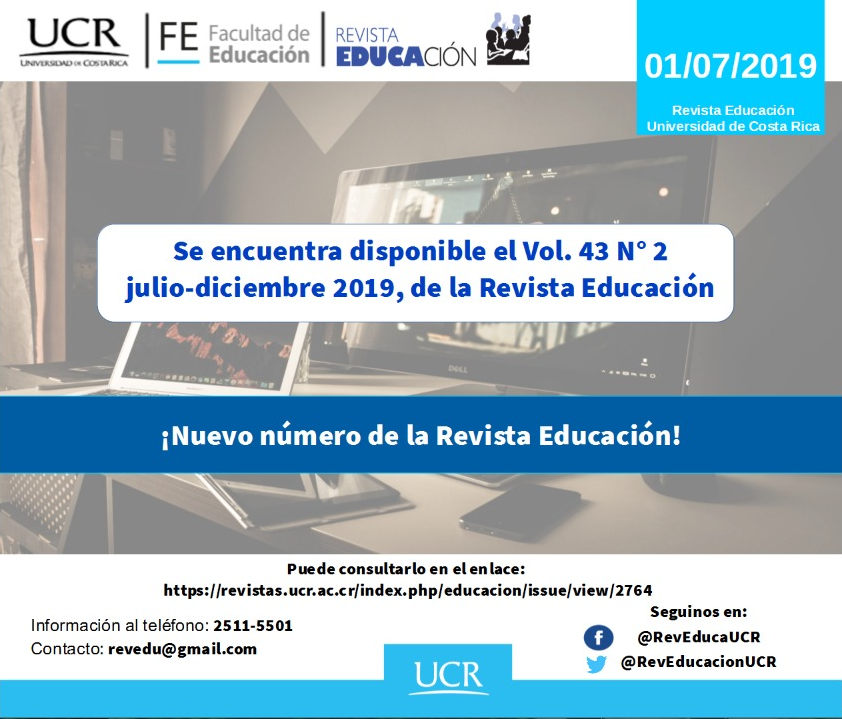Abstract
The purpose of this study is to compare and contrast on-ground, hybrid, online, and flipped teaching techniques in the L2 classroom as to determine which delivery method best promotes student learning, target language use, and language spontaneity among students. Data was collected for three semesters at a college in the Midwestern region of the United States from different sections of the same introductory-level Spanish course. The differences between the class sections was the delivery method (one for each type of the aforementioned methods). A sample group of 53 participants were compared with the on-ground/traditional class section final and oral exams and compared with the on-ground/traditional section using unpaired t tests. Each of the class instructors maintained a journal to document qualitative classroom experiences. The study concludes that no one group performed statistically better than the other group on the oral exams. There were no statistically significant differences on the final exams, except with the online class group which performed worse. The delivery method selected should be based on student, community, and departmental needs. However, instructor journals noted greater target language use in the flipped and hybrid sections.
References
Allen, I. E. y Seaman, J. (2016). Online report card: Tracking online education in the United States. Babson Park, MA: Babson Survey Research Group.
Bachelor, J. W. (2018). The “flipped-hybrid” classroom: A didactic technique for teaching foreign languages. e-Mentor, 2(74), 5-11.
Bachelor, J. W. (2017). Increasing student communication and spontaneous language use in the L2 classroom: A careful consideration of the flipped classroom model. The TFLTA Journal, 6, 5-11.
Bañados, E. (2006). A blended-learning pedagogical model for teaching and learning EFL successfully. CALICO Journal, 23(3), 533-550.
Barnard, R. (2017). Alternative assessments and student perceptions in the world language classroom. The TFLTA Journal, 6, 30-44.
Bergmann, J. y Sams, A. (2012). Flip your classroom: Reach every student in every class every day. Alexandria, VA: International Society for Technology in Education.
Clavijo, A., Hine, N., y Quintero, L. M. (2008). The virtual forum as an alternative way to enhance foreign language learning. PROFILE: Issues in Teachers’ Professional Development, 9(1), 219-236.
Consejo Americano para la Enseñanza de Lenguas Extranjeras [ACTFL] (2010). Use of the target language in the classroom. Recuperado de https://bit.ly/2LgnfoU
Crouse, D. (2012). Going for 90% plus: How to stay in the target language. The Language Educator, 7(5), 22-27.
Curtain, H. (2013, marzo). Staying in the target language: Comprehensible input and beyond. Northeast Conference on the Teaching of Foreign Languages. Comunicación presentada en el congreso en Maryland, Estados Unidos.
Ducate, L, Lomicka, L, y Lord, G. (2012). Hybrid learning spaces: Re-envisioning language learning. En F. R. Rubio y J. Thoms (Eds.), Hybrid language teaching and learning: Exploring theoretical, pedagogical and curricular Issues (pp. 67-91). Boston, MA: Heinle Cengage.
Ducate, L., y Lomicka, L. (2008). Adventures in the blogosphere: From blog readers to blog writers. Computer Assisted Language Learning, 21(1), 9-28.
Fulton, K. (11 de abril de 2012). Inside the flipped classroom. The Journal. Recuperado de https://thejournal.com/Articles/2012/04/11/The-flipped-classroom
Gerstein, J. (2012). Flipped classroom: The full picture for higher education. User Generated Education. Recuperado de https://bit.ly/2BI4AiA
Green, G. (2012, julio). The flipped classroom and school approach: Clintondale High School. Ponencia presentada en el congreso de Massachusetts, Estados Unidos.
Hauschildt, S. (2017). Blended learning in the Spanish classroom (Tesis de máster sin publicar). Iowa, Northwestern College.
Jabeen, S. S. y Thomas, A. J. (2015). Effectiveness of online language learning. World Congress on Engineering and Computer Science, 1, 1-5.
Kudysheva, A. A. y Kudyshev, A. N. (2013). The model of blended learning and its use at foreign language teaching. International Journal of Psychological and Behavioral Sciences, 7(1), 1-3.
Lee, S., Kim, J., Lee, J y Liu, X. (2005, agosto). The effectiveness of online situated environments for language learning. Ponencia presentada en el congreso de Wisconsin, Estados Unidos.
Orosz, T. E. (2016). Online versus on-ground: student outcomes and the influence of student engagement in a college success course (Tesis doctoral sin publicar). Nueva Jersey, Rowan University.
Relan, A. y Gillani, B. B. (1997). Web-based instruction and the traditional classroom: Similarities and differences. En B. H. Khan (Ed.), Webbased instruction (pp. 41-46). Englewood Cliffs, NJ: Educational Technology Publications.
Torres, J. (2016). Flipping the classroom: A pedagogical model for promoting heritage language writing skills. En D. Pascual y Cabo (Ed.), Advances in Spanish as a Heritage Language (pp. 299-324). Amsterdam, Holanda: John Benjamins Publishing Company.






